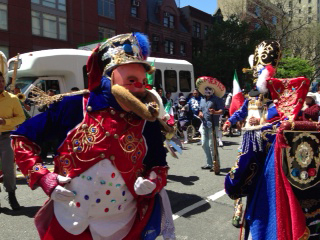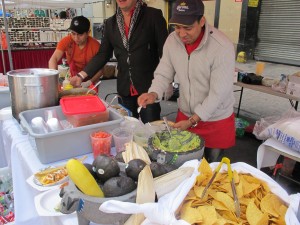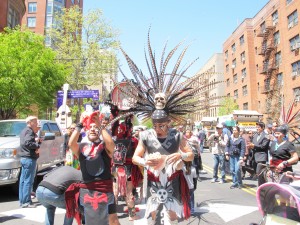
It seems like a big fiesta, but the history of Cinco de Mayo is covered in bloodshed and remembrance. Contrary to popular belief, Cinco de Mayo is not Mexico’s independence day. El Grito de la Indepedencia (The Cry of Independence) is held annually on September 16 in honor of Mexico’s independence from Spanish rule in 1810.

Cinco de Mayo celebrates the country’s freedom from France’s occupation after the Mexican-American War of 1846-48. Recognized mostly in the United States with parties and parades, the holiday was invented in California in 1863. Ignored in Mexico except for a few states, especially Puebla, Cinco de Mayo is a day for Mexican-Americans to celebrate pride for their homeland, people and history.
According to Fox News Latino: “Latinos are helping fuel New York City’s population growth, but the composition of the Hispanic community is changing, according to an analysis of 2010 Census data released by the Department of City Planning.
The Mexican-origin population of New York City skyrocketed from 2000 to 2010, while the Puerto Ricans that helped fuel the city’s growth in the 1930s and 1940s abandoned the city in large numbers. The Mexican share of New York City’s population jumped 73.7 percent to 319,263, with immigrants accounting for more than half of them.

The Puerto Rican population, meanwhile, dropped 11.2 percent. Notwithstanding the decline, Puerto Ricans remain the largest Latino group in the city, with 723,621. Dominicans, the second-largest group by country of origin, also experienced strong growth, with an 8.2 percent jump, to 576,701.
Latinos are New York City’s second-largest ethnic group, with 28 percent of the total. The city’s Hispanic population as a whole rose 8.1 percent, to 2.34 million—making well over one in four New Yorkers a Latino. The Latino population increased in all of the five boroughs, except Manhattan.
The largest growth in Latino populations across the board occurred in the outer boroughs of the Bronx and Staten Island. Only two other ethnic groups grew as a portion of the city’s total population—Asians (31.8 percent) and Native Americans (0.6 percent).

White non-Hispanics remain New York’s largest ethnic group, at 2.72 million—about one-third of the total population. That figure marks a 2.8 drop since 2000. New York City is the country’s largest city by far, with a population of over 8 million.”
Read more: http://latino.foxnews.com/latino/news/2012/05/10/new-york-changing-latino-population/#ixzz2TUZZJp2g